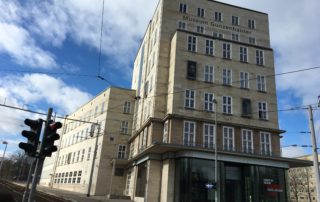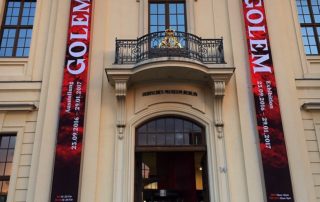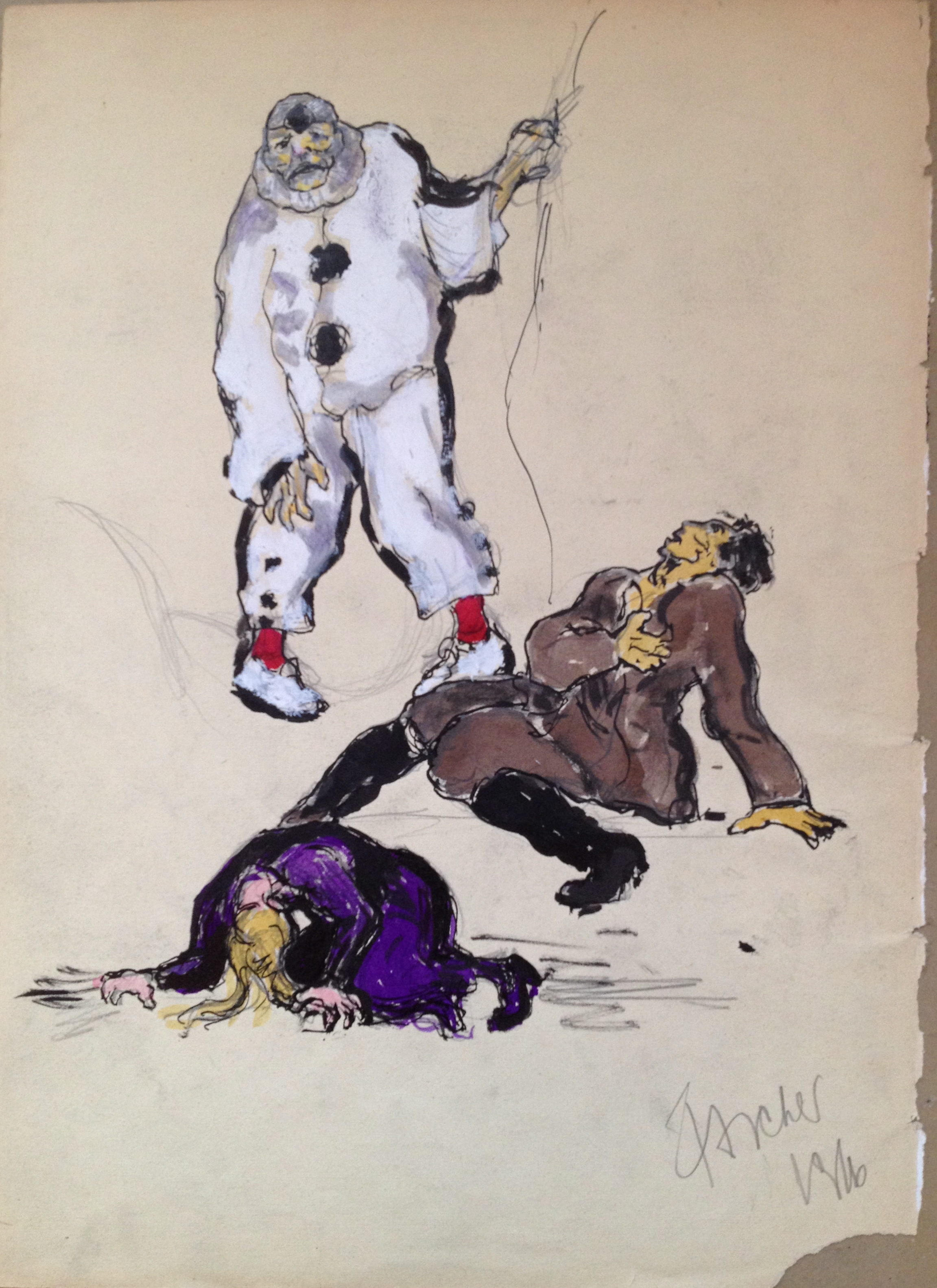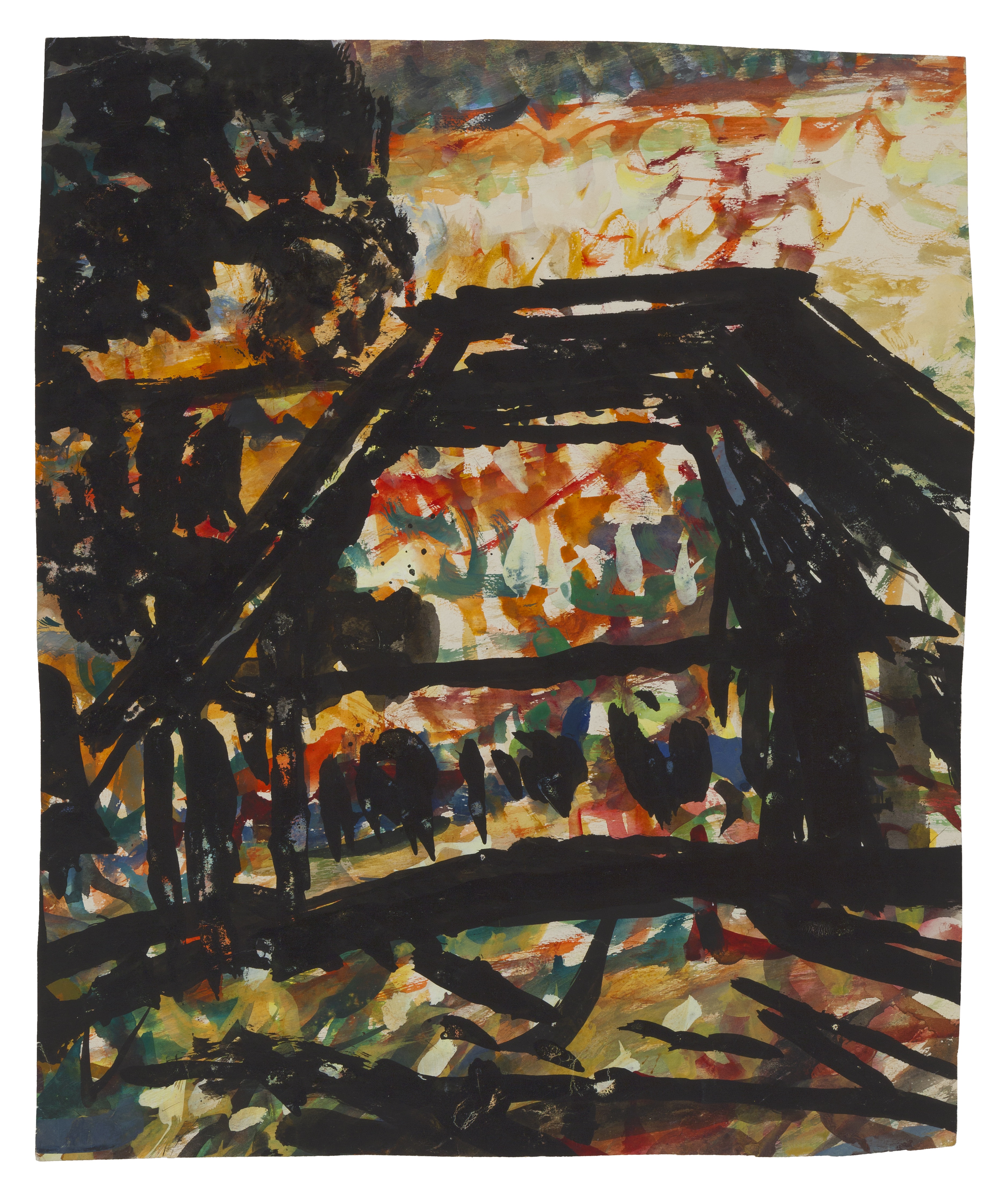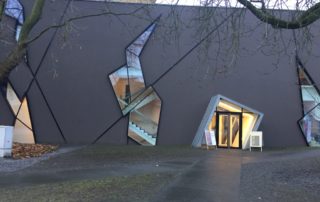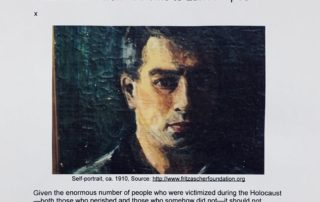Rachel Stern2018-12-03T16:21:23-05:00January 12th, 2017|Exhibitions, Past Exhibitions|
The worldwide first Fritz Ascher Retrospective is on view at the Kunstsammlungen Chemnitz - MUSEUM GUNZENHAUSER from March 5 to June 18, 2017. (website link) The main focus of the presentation at the Kunstsammlungen Chemnitz - MUSEUM GUNZENHAUSER is on the artist's important early masterworks like "Golgatha" (1915), "Bajazzo and Artists" (ca. 1916) and "The Tortured" (ca. 1916). For the first time ever, Fritz Ascher’s “Golem” from the collection of the Jewish Museum Berlin will here be reunited with other works the artist created between 1913 and 1933. The Kunstsammlungen Chemnitz is home to an important collection of German Expressionism, dominated by artwork of the locally founded Expressionist group Brücke and especially Karl Schmidt-Rottluff, who grew up in Chemnitz, along [...]
Rachel Stern2018-12-04T12:43:56-05:00July 28th, 2016|Newsletter|
Dear Friends, Today we are all about literature. 400 years ago the poet William Shakespeare died (1564-1616). Ever since, the dramatic scenes in his plays have inspired many artists’ brush and pen, like William Turner, Edvard Munch, Max Slevogt and Lovis Corinth. Fritz Ascher drew scenes from Shakespeare’s "King John“, "King Richard II." and "Henry IV." He is almost certainly inspired by numerous performances, especially in Berlin. Most famous was the Austrian theater producer Max Reinhardt, who staged Shakespeare's plays at the "Deutsches Theater" and the "Großes Schauspielhaus". The drawing below shows the stage in the right background; in the foreground a man and a woman sit in a box, the rest of the audience sits below. Stage plays have [...]
Rachel Stern2018-12-03T17:37:55-05:00February 4th, 2016|Exhibitions, Past Exhibitions|
Fritz Ascher's monumental painting "Golem" from 1916 is part of the exhibition "Golem" at the Jewish Museum Berlin (September 23, 2016 - January 29, 2017).websiteThe myth of the human being that can create new life is the central theme of the large thematic exhibition "Golem" at the Jewish Museum Berlin. Until today the most prominent Jewish legendary figure inspires generations of artists and writers. The exhibition presents the Golem from its Jewish mystical source to popular narratives for film or in artistic and digital media. Formed in clay or dust, a being is brought to life by mystical rituals including Hebrew letter combinations. Created by a human being, the Golem becomes a helper, a companion or the savior of a [...]
Rachel Stern2018-12-04T12:45:14-05:00February 4th, 2016|Newsletter|
Dear Friends, As I am writing this newsletter, the snow is (still) melting here in New York after one of the largest snow storms in recent history. At the same time, Carnival is in the air - at least for our German friends. What better moment to introduce Fritz Ascher's clowns - a theme that occupied the artist throughout his career. It was certainly no coincidence that Ruggero Leoncavallo's opera "Pagliacci" (Clowns) was hugely popular in Weimar Republic Berlin - especially the performances with the best known Tenor of his time, Enrico Caruso, as Canio. Fritz Ascher, Bajazzo, 1916 In the opera, Canio, the head of a troupe of comedians, finds out that his wife Nedda has an affair with [...]
Newsletter #4 December 2015
Rachel Stern2018-12-04T12:45:51-05:00December 17th, 2015|Newsletter|
Dear Friends, As the days are getting shorter and darker, and will at some point probably get colder as well, I remember fondly this past summer, when I had the chance to discover the vastness and diversity of the Grunewald, the largest city forest in Berlin, with Dr. Gudrun Rademacher, the long term director of the Forest Museum Grunewald. Within minutes Fritz Ascher was there, and he often walked for hours, usually in the early mornings or late at night. He documents in his art what he sees: heavy-trunked trees stand in open landscape, shaken by the wind, deep in leaf, or winterly bare. Dr. Rademacher discovered gouaches of the Forest Museum, the Hunting Castle with its signature orange roof, [...]
Rachel Stern2018-12-03T17:21:48-05:00June 10th, 2015|Exhibitions, Past Exhibitions|
The first ever Fritz Ascher Retrospective is on view at the Felix-Nussbaum-Haus in Osnabrück from September 25, 2016 until January 15, 2017. website link This first comprehensive retrospective of Fritz Ascher's art shows a representative group of ca. 80 works (30 paintings and 50 works on paper), which span his whole oeuvre from first academic studies to monumental Expressionist figure compositions to late landscapes. The emotional immediacy, intensity and authenticity of Fritz Ascher’s work insures its relevance for today’s viewers. At the same time, it raises interesting questions about individuality and artistic integrity in response to conditions of extreme duress and to political tyranny. The exhibition is under patronage of the German Minister of Culture and Media Prof. Monika Grütters. [...]
Rachel Stern2021-02-25T04:48:57-05:00January 18th, 2015|Select Press Coverage|
Fritz Ascher: from Golems to Landscapes by Ori Z. Soltes Given the enormous number of people who were victimized during the Holocaust—both those who perished and those who somehow did not—it should not surprise us that, as time goes by, narratives still continue to emerge reflecting the varied experiences of these victims and their tormentors or saviors. Among these there are many artists—artists, like Felix Nussbaum (1904-1944), who were producing high-level work, and others less skilled—who did not survive but left behind bodies of work that provoke the question: what if? Had these artists not been destroyed by the Nazis, what might they have accomplished and what songs of praise might art historians now be singing about them? There [...]
Rachel Stern2018-12-04T12:46:50-05:00December 23rd, 2014|Select Press Coverage|
If not for the Nazis, he may have been the next Leonardo German Expressionist painter Fritz Ascher survived the Holocaust, but his career never recovered. A new foundation is trying to change that by Cathryn J. Prince NEW YORK – “Artist, interrupted” — two words that describe the accomplished German Expressionist painter Fritz Ascher, a Berlin-born artist who was persecuted, ostracized and banned under the Nazi regime. But now, if Rachel Stern has her way, Fritz Ascher will be “artist, re-discovered. “The intensity, the strong energy, the colors, the forms,” Stern said recalling the first time she saw his work in the mid-80s. It was love at first sight. In fact, Ascher’s work so touched Stern she started researching the [...]


